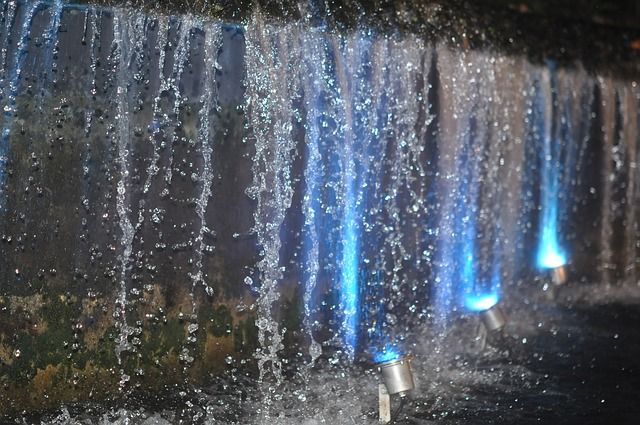Can Singapore Build a Better Environment?
Published on by Dr. Cecilia Tortajada, Professor in Practice, School of Interdisciplinary Studies, University of Glasgow, UK in Social
Resource efficiency efforts for a sustainable built environment
 In resource-scarce Singapore, the mentality of providing resources ad infinitum, even if they are efficiently used, has to change, Tommy Kevin Lee and Cecilia Tortajada write.
In resource-scarce Singapore, the mentality of providing resources ad infinitum, even if they are efficiently used, has to change, Tommy Kevin Lee and Cecilia Tortajada write.
POLICY FORUM | December 6, 2017
The recently-launched Sustainable Singapore Blueprint outlines the national vision for a more liveable and sustainable city-state. It is a comprehensive plan to implement sustainability efforts in the domestic and non-domestic sectors, and one that challenges the city-state to be a global leader in sustainability efforts. Can Singapore rise to the challenge?
The objective of the Blueprint is to understand how natural resources are used and how their use can become more efficient in the long-term. Initiatives on the environment, water, energy, food and waste management are some of the several examples.
As the world has become more urban, some of the most important efficiency efforts are those that address urban development in a more sustainable manner. As a result, green building councils and accreditations have emerged in advanced economies to masterplan green projects, infrastructure and buildings that are highly efficient and cost saving. International examples include the Building Research Establishment Environmental Assessment Method (BREEAM), and Leadership in Energy and Environmental Design (LEED).
In Singapore, the push for green infrastructure has translated into the Green Mark scheme under the ambit of the Building and Construction Authority (BCA). The scheme is mandatory and requires minimum green standards for buildings nationwide. Developments in regions earmarked for strategic growth have to meet higher level standards: Platinum for Marina Bay and GoldPlus for the rest of the central and Jurong business districts, Kallang Riverside, Paya Lebar, Woodlands and Punggol.
In Singapore, BCA has recently announced a collaboration with the Health Promotion Board to develop a new scheme for indoor environmental quality. This is in line with a study which found that green-certified buildings also provide a healthier indoor environment for their occupants. Water, however, is under the jurisdiction of the Public Utilities Board (PUB), Singapore’s National Water Agency. For buildings to score on the water efficiency assessment criteria on Green Mark, a pre-requisite is that they must have achieved PUB’s Water Efficient Building certification. These include using water-efficient fittings and adopting recommended flow rates and flush volumes that can result in savings of about 5 per cent of monthly water consumption.
Since 2004, the certification process has encouraged businesses and industries to put in place water-efficient measures in their premises and processes. From January 2015, large consumers of water (more than 60,000 cubic metres of water per year) have been required to submit a management plan for three consecutive years. These are essentially water audit documents that show how water is used within the premises.
This is a significant shift in water demand management thinking. Before, PUB had only data on the water use of each business or industry based on the number metered on the bill. Now, users provide a breakdown of water use for their internal operations. The stronger data collected on the breakdown of water usage multiplies the possibilities for improvement and efficiency.
PUB now has three years worth of reporting, from 2014 to 2016, and has analysed this data and created a Water Efficiency Index to identify the sectors and operations that use the most water. From this data it has created a benchmark to rank the best- and worst-in-class in each sector.
This is the basis of the Water Efficiency Awards handed out in November 2017, where the efficiency efforts of 27 non-domestic users in seven sectors were recognised: Office, Retail, Hotel, Wafer Fabrication, Refinery, School and Estate.
Moving ahead, benchmarking will continue for these sectors to obtain a better picture of non-domestic water use. Gathering data, benchmarking water use and documenting best practices for each sector is essential for demand management.
In water-scarce Singapore, non-domestic water use accounts for 55 per cent of total use today. For continued economic growth, it is projected to be 70 per cent by 2060, one year before the second water agreement with Malaysia ends.
Some might argue that the country can just build more NEWater and desalination plants, and big businesses can afford to pay for water at full cost. However, this would be very short-sighted. The mentality of providing resources ad infinitum, even if they are efficiently used, has to change.
On the ground, this means that domestic and non-domestic users have to learn how to use resources more efficiently.
More than just about water or energy efficiency, there is a slow but steady move towards sustainable development as the platform for growth. It may value-add businesses to understand the coming expectations for progressive environment sustainability practices in their operations in a greener economic and social setting.
Global change requires multiple efforts at the local level. The focus on resource use all over the world is changing from increasing supply to managing demand. Singapore cannot be the exception. Known for its innovation at all levels, it is time for users in the city-state to become a global example of sustainability efforts.
Tommy Kevin Lee is a researcher at the Institute of Water Policy, Lee Kuan Yew School of Public Policy, National University of Singapore. Cecilia Tortajada is a senior research fellow at the Institute of Water Policy, Lee Kuan Yew School of Public Policy, National University of Singapore.
Source: http://bit.ly/2k9QHOi
Media
Taxonomy
- Governance
- Agriculture
- Integrated Urban Water Management
- Environment
- Urban Water
- Urban Water Supply
- Energy
- City